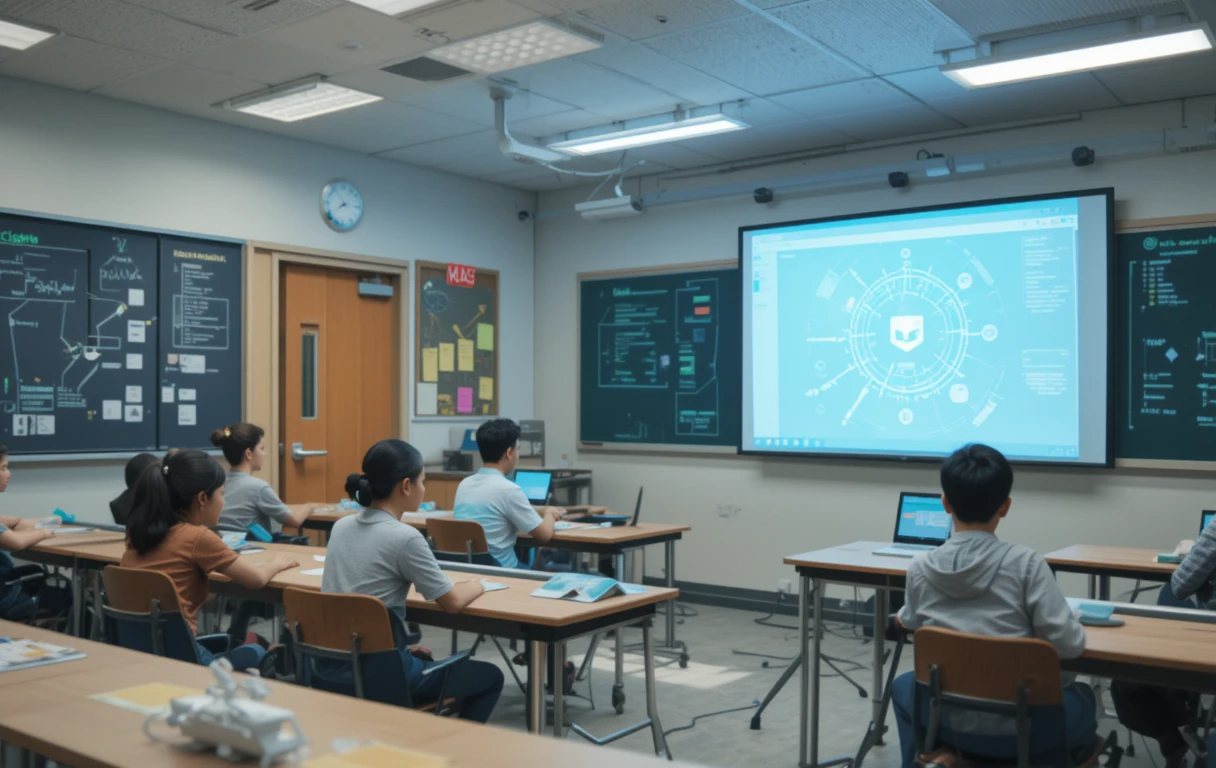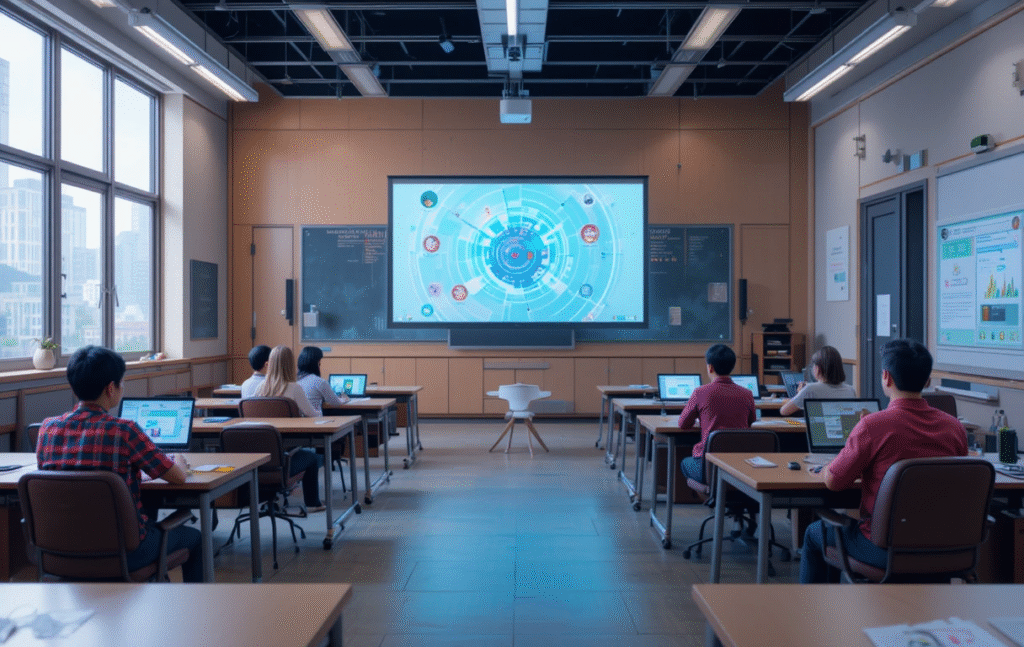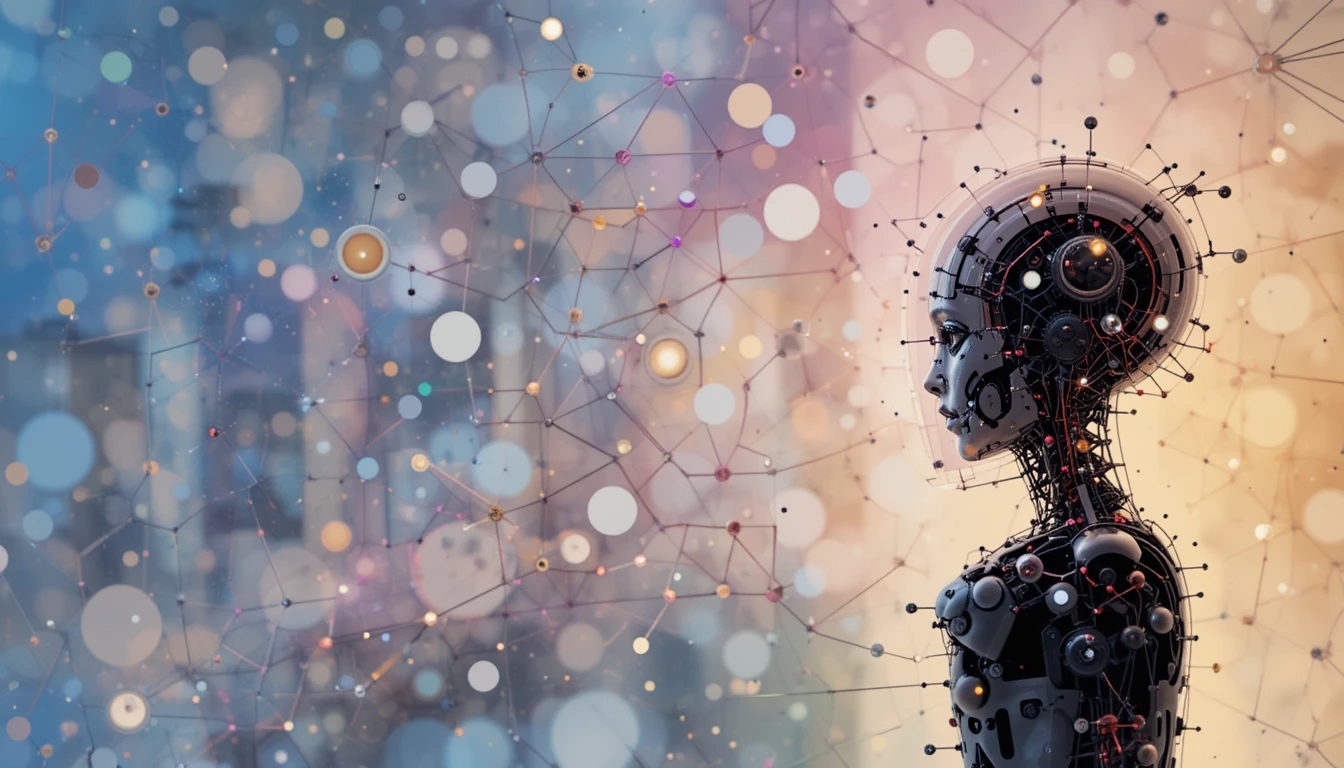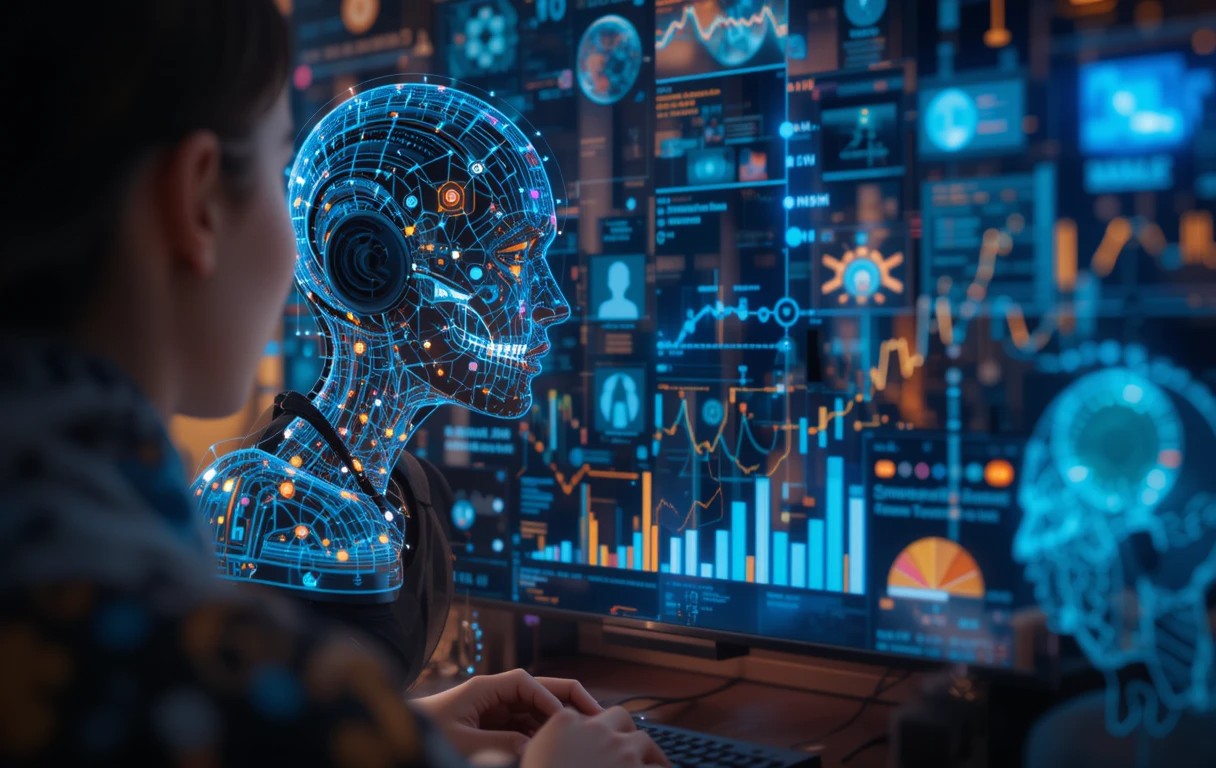In just a few short years, artificial intelligence (AI) has transformed from a futuristic concept into a powerful force shaping industries—and education is no exception. As we look ahead to the next decade, the classroom is poised for a profound evolution. No longer confined to traditional rows of desks and chalkboards, tomorrow’s classrooms will be intelligent ecosystems where AI dynamically tailors the educational experience to individual learners.
This blog post explores the future of AI-powered classrooms—how they will function, what technologies will be central, and how they will redefine teaching and learning in the 2030s.
🚀 The Evolution of AI in Education
AI integration in education is not a sudden leap but a continuous transformation. Here’s a quick timeline:
- 2010s: Basic automation and adaptive learning platforms emerge (e.g., Khan Academy, Duolingo).
- 2020s: AI begins supporting grading, content personalization, and accessibility (e.g., ChatGPT, Grammarly, Quizlet).
- 2030s (Predicted): Fully AI-integrated classrooms with intelligent assistants, AR/VR interfaces, emotion-aware systems, and real-time data-driven decisions.
We are at the cusp of a decade that could reimagine what education looks like—where teaching and learning are no longer constrained by one-size-fits-all systems.
🏫 What Will AI-Powered Classrooms Look Like?
AI-powered classrooms will be smart, connected, adaptive, and inclusive. Key features include:
1. 🧠 Hyper-Personalized Learning Paths
AI will continuously analyze:
- Learning speed
- Comprehension levels
- Interests
- Emotional state
Using this data, it will create dynamic learning plans tailored to each student, adjusting content, pace, and difficulty in real-time.
2. 🤖 Intelligent Virtual Teaching Assistants
AI teaching assistants (like advanced versions of ChatGPT) will:
- Answer student questions instantly
- Offer explanations in multiple formats (text, video, audio)
- Provide multilingual support
- Handle administrative tasks like attendance or homework reminders
This frees teachers to focus on high-value interactions and mentoring.
3. 🌐 Augmented and Virtual Reality Integration
Using AR/VR powered by AI:
- Students will explore 3D environments like ancient Rome or the human heart.
- Virtual labs will allow experimentation without risk or resource limits.
- AI will adjust scenarios based on student performance (e.g., simplify for struggling learners, increase complexity for gifted students).
4. 📊 Real-Time Analytics for Educators
Teachers will receive dashboards showing:
- Student performance trends
- Engagement levels
- Emotional and behavioral indicators
- Content efficacy scores
This empowers data-driven interventions, earlier support, and better planning.
5. 🗣️ Natural Language Processing for Seamless Communication
NLP will:
- Translate instructions in real-time for multilingual classrooms
- Summarize student essays
- Grade open-ended responses
- Provide speech-to-text and text-to-speech for accessibility
Students with disabilities, language barriers, or learning disorders will be able to participate fully.
🤯 The Role of Teachers in AI-Powered Classrooms
Contrary to popular fears, AI will not replace teachers—it will augment them.
New Roles for Teachers:
- Facilitators of personalized learning: Interpreting AI-generated insights and adapting instruction accordingly.
- Mentors and motivators: Providing emotional support, human interaction, and inspiration that AI cannot replicate.
- Curriculum designers: Collaborating with AI systems to co-create dynamic learning experiences.
- Ethics guides: Teaching students how to use AI responsibly, critically, and ethically.
Teachers will be more empowered, not obsolete.
🧰 Emerging Technologies Driving AI Classrooms
Let’s look at the core technologies likely to shape classrooms in the next decade:
| Technology | Description | Classroom Role |
|---|---|---|
| Machine Learning | Learns from student data and adapts | Personalizes lessons and detects patterns |
| Computer Vision | Analyzes facial expressions and actions | Tracks engagement and emotional states |
| NLP (Natural Language Processing) | Understands and generates human language | Powers chatbots, translation, and voice tools |
| IoT (Internet of Things) | Connects classroom devices and sensors | Enables smart lighting, temperature, attendance |
| AR/VR | Immersive 3D environments | Provides experiential learning |
| Blockchain | Decentralized data storage | Secure student records and achievements |
| Edge Computing | Local processing on devices | Reduces latency and increases privacy |
Together, these technologies will form a seamless, intelligent classroom environment.
💡 Benefits of AI-Driven Classrooms
1. 🧠 Personalized Mastery
AI ensures every student progresses at their own pace, never left behind or bored due to mismatched content.
2. 📉 Reduced Dropout Rates
With real-time interventions, schools can detect disengagement or emotional stress early, supporting at-risk students before they fall through the cracks.
3. 📚 Richer Learning Experiences
From interactive VR field trips to AI-assisted debates, learning will be hands-on, engaging, and fun.
4. 🌍 Greater Inclusion and Accessibility
Language, disability, or location will no longer be barriers. AI enables participation for all students.
5. 🧾 Administrative Relief
AI automates repetitive teacher tasks like grading, lesson planning, and attendance tracking—saving hours every week.
⚠️ Challenges and Risks Ahead
As promising as AI-powered classrooms sound, several challenges must be addressed:
1. 🕵️ Privacy and Data Security
Constant data collection raises concerns. Who owns the data? How is it stored and used? Robust privacy frameworks must be in place.
2. ⚖️ Algorithmic Bias
AI trained on limited or biased data may reinforce stereotypes or unfairly grade certain groups. Diversity in data and constant auditing are essential.
3. 💸 Digital Divide
Low-income schools may lack the infrastructure or funding for AI tools. Policymakers must ensure equitable access.
4. 🧑💻 Teacher Training Gaps
Educators must be trained to understand and use AI effectively, or they risk being overwhelmed or sidelined.
5. 🤖 Over-Reliance on Technology
Human interaction is vital to emotional and social development. AI should support—not replace—real connections.
🌐 Global Impact: A Look Around the World
AI-powered classrooms are already being piloted globally.
- China: AI systems track student focus with facial recognition to adjust pacing.
- Finland: AI tutors assist in multilingual classrooms.
- USA: Public schools are investing in AI platforms like Squirrel AI and Knewton for personalized math instruction.
- India: EdTech startups like BYJU’S and Embibe use AI to tailor lessons to rural and urban students alike.
The future is global—and inclusive.
📅 The Next Decade: Year-by-Year Outlook
| Year | Expected Development |
|---|---|
| 2025 | AI tools integrated in 50% of urban schools globally |
| 2026-2027 | AI-powered grading and analytics become standard |
| 2028 | Emotionally aware AI begins piloting |
| 2029 | AR/VR learning integrated into 40% of high school classrooms |
| 2030 | AI co-designs curriculum with teachers |
| 2031-2032 | Fully AI-managed classrooms emerge in advanced regions |
This timeline is not set in stone, but the trajectory is clear: the classroom of the future will be intelligent, adaptive, and student-centered.
🧑🎓 Preparing Students for an AI World
The AI-powered classroom is not just about teaching with AI—it’s about teaching about AI.
Future-ready students will need:
- Digital literacy and critical thinking
- Understanding of AI ethics and bias
- Skills in data analysis and coding
- Emotional intelligence and creativity (what AI lacks)
Curriculums will need to blend STEM with humanities to create well-rounded thinkers.
✅ Final Thoughts: The Intelligent Classroom Is Coming
The next decade will see the rise of classrooms that:
- Understand student needs instantly
- Teach dynamically, with immersive content
- Support every learner, regardless of background
- Free teachers to do what they do best—inspire
AI is not here to disrupt education—it’s here to enhance it. When implemented ethically and inclusively, AI-powered classrooms can unlock human potential on a scale we’ve never seen before.
Are we ready to step into the future of education?



